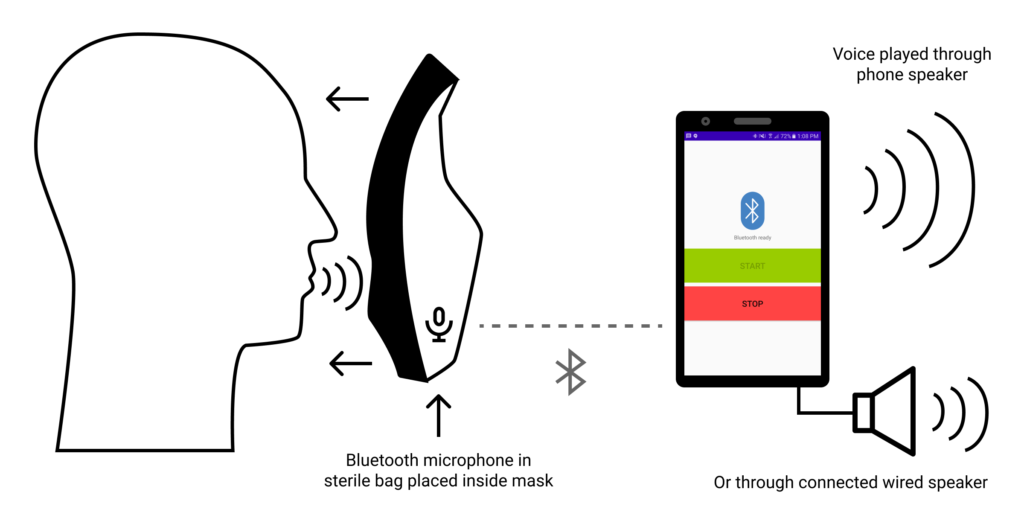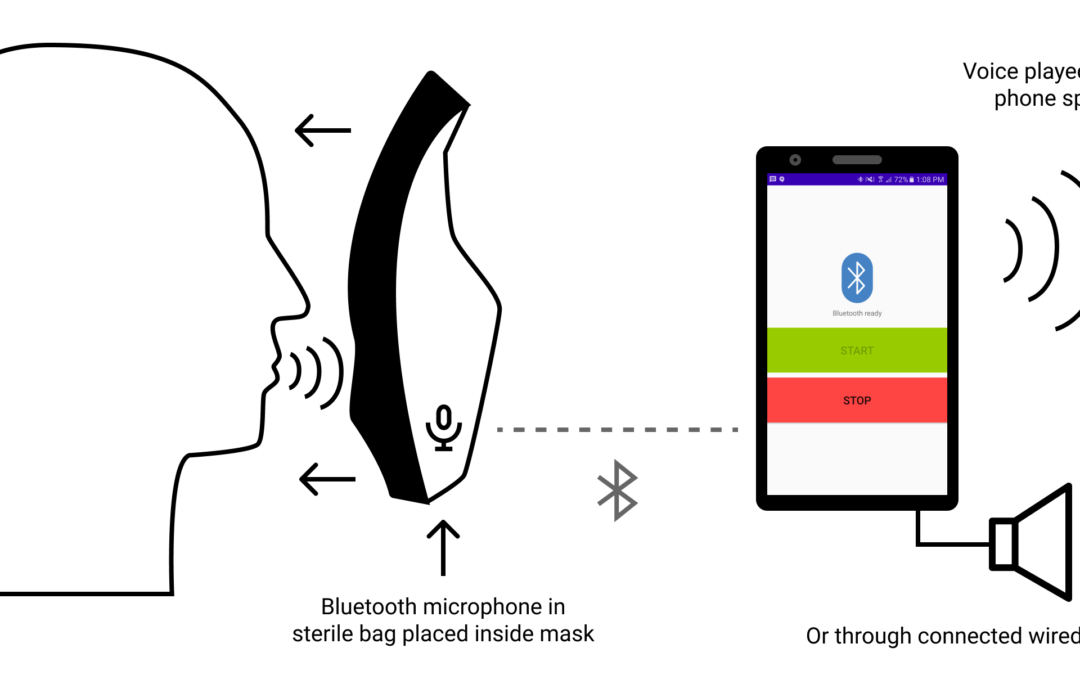In response to the current shortage of N95 medical masks, the Prakash Lab at Stanford University is developing a novel face mask for use in the fight against COVID-19. The team is working with others around the world to convert full-face snorkel masks into medical-grade reusable masks by replacing the snorkel with a 3D-printable filter cartridge.

One downside of the mask is that it muffles the voice of the wearer, thereby inhibiting communication and requiring the wearer to strain their voice to communicate with others in a noisy environment. In order to help sound travel past the mask, two fellow Olin students and I created an Android app to relay audio from a Bluetooth microphone inside the mask to speakers outside the mask. Sound can either be played on the phone’s internal speakers or through speakers connected to the device’s wired headphone jack.

One major hurdle that we are facing is that it’s not straightforward to split the audio streams between audio devices. Taking an input stream from the Bluetooth microphone and playing it on the phone’s speakers is achievable on some Android devices by telling the OS the audio stream is an alarm. However, different manufacturers customize their versions of Android, and at least Samsung has rerouted alarm streams from the onboard speakers to any connected audio devices. Additionally, devices running Android 9 Pie or later exhibit different audio routing behavior than devices running previous versions of Android. There may be additional workarounds we could use, but we are waiting to determine whether this app is useful to clinicians before going down that rabbit hole.
Additionally, those of us with Apple devices are developing a version for iOS, since many doctors have iPhones. Little progress has been made so far because iOS exerts similar constraints on audio routing, but we have a few people inside Apple, including someone high up in the company, looking into making an exception for our app. The hope is that this exception might be pushed with the “COVID-19” iOS update that is in the works and due to be released shortly. If that does happen, then an iOS version of the app could be created and routing behavior should be much more consistent on Apple devices.
The Android app is available on the Google Play Store, and all of its code is available on GitHub.
In addition to helping create the Android app, I am also helping build the website for the mask, pneumask.org.

